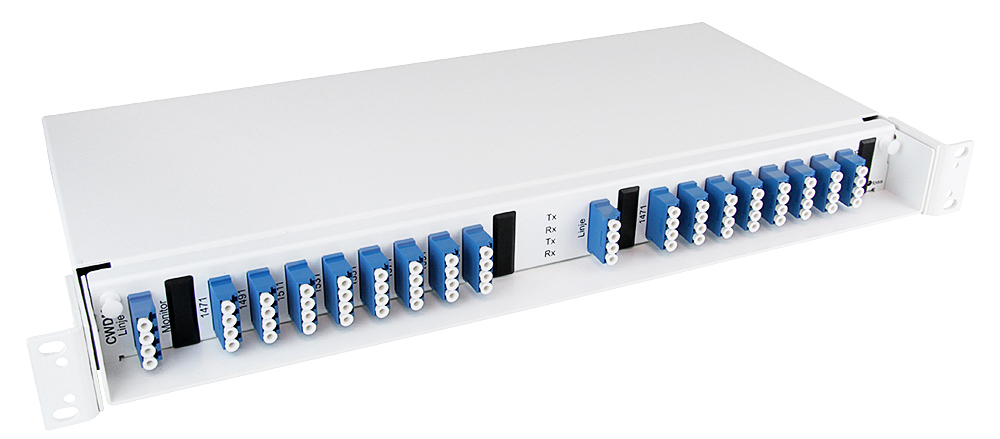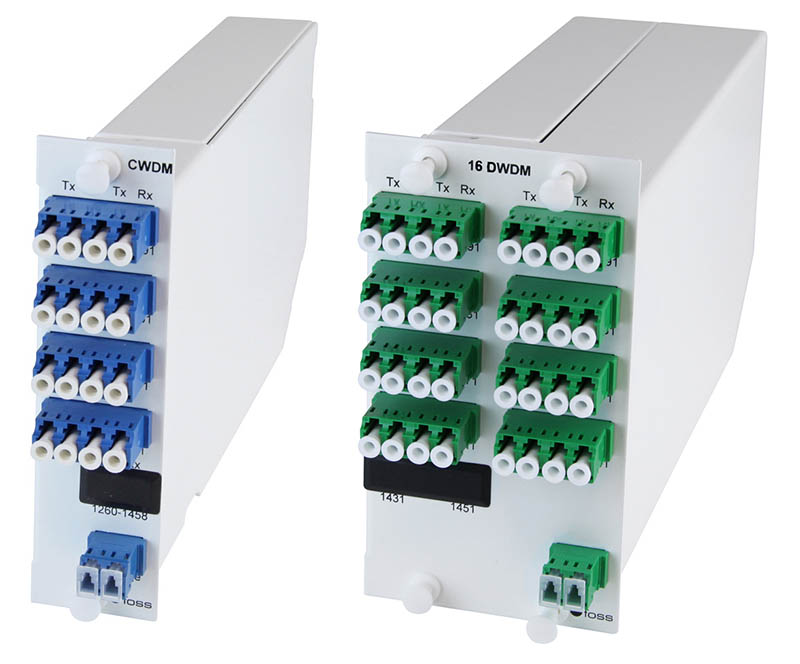WDM (Wavelength Division Multiplexing)
Multiplexes 2 wavelengths, 1310 nm and 1550 nm.
Used, for example, when running 1 fiber to a subscriber, point-to-point in FTH (fiber to the home) network (downstream and upstream).
CWDM (Coarse Wavelength Division Multiplexing)
Multiplexes up to 18 wavelengths, utilizing the wavelength range of 1271 - 1611 nm.
20 nm spacing between channels.
DWDM (Dense Wavelength Division Multiplexing)
Uses the wavelength range of 1528.77 - 1560.61 nm.
The standard defines even more wavelengths over a larger range, but the mentioned range is the most commonly used.
0.8 nm spacing between channels for 40 channels, 0.4 nm for 80 channels, etc.
Unlike CWDM, it can be amplified.
OADM (Optical Add-Drop Multiplexer)
In a wavelength division multiplexing system (typically CWDM or DWDM), OADM components provide the capability to selectively remove (drop) and/or add individual wavelengths along the path between endpoints.
Example where CWDM is used as OADM:





